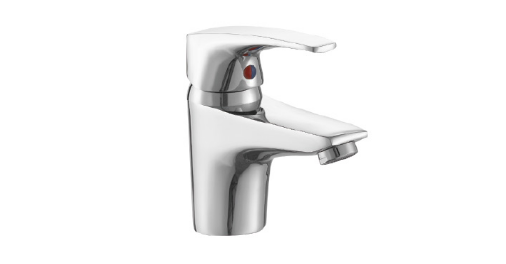Table of Contents
A bathroom faucet is an essential fixture that we use every day. It’s easy to overlook its importance, but over time, wear and tear can take its toll on the faucet’s parts. When a faucet starts to wear down, it can quickly interfere with your daily routine and even result in higher water bills. That’s why it’s crucial to replace it as soon as possible.
If you’re unsure whether it’s time to replace the bathroom faucet single handle, there are several obvious signs to watch out for. In this blog, we’ll outline ten unmistakable signs that indicate it’s time for a bathroom faucet handle replacement. Knowing these signs can help you avoid working with a faulty faucet and ensure your bathroom remains functional and efficient.
Signs You Need To Replace Bathroom Faucet
1. Dripping Faucet
If a faucet continues to drip even after being fully turned off, there may be a problem with the valves or pipes, or high water pressure in your pipes may be causing the unintended drip. Although a dripping faucet may not appear to be a serious problem, it can cause significant water damage to the sink.
Some dripping faucets can be fixed with minor adjustments. However, if the problem persists despite multiple attempts at repair, it’s time to consider replacing the entire faucet.
2. Grime, Rust, or Mineral Buildup
If the faucet handles become difficult to turn or start to crack during use, it may indicate internal rusting and corrosion. Rust typically accumulates from the inside out, making it difficult to detect initially. As a result, a rusty faucet that is left unattended can lose its effectiveness and become susceptible to leakage.
To minimize the effects of rust, corrosion, and mineral deposits, consider replacing your faucet and installing a water softener.
3. Leaking Faucets or Handles
If your faucet is leaking, it may indicate that the handle is either cracked or in need of replacement. In some cases, a bathroom faucet may continue to drip even after being turned off, which can be caused by several factors.
One possibility is that there may be broken parts inside the faucet, which can be determined by inspecting the handle’s functionality. If the handle is found to be broken, a bathroom faucet handle replacement should be considered.
4. Squeaking Handle
If the handle or other components become damaged, it’s time to replace the bathroom faucet’s single handle. When handles are broken, they can produce a squeaking sound, indicating that the faucet stem has worn down excessively.
Although you can temporarily fix the issue by coating the handle stem with the plumber’s grease, a deteriorating faucet can cause further complications if not replaced.
5. Noisy Faucet
Do you hear whistling or screeching noises every time you turn on the tap? This could be due to a hardened or faulty rubber washer. Additionally, be cautious of clanking sounds as they may indicate cracks in the faucet. In some instances, unusual noises may also result from a blockage in the pipeline, and a bathroom faucet handle replacement may be needed.
6. Spitting Faucet
In addition to the signs mentioned above, if water is spitting out instead of flowing in a steady stream, it may be time for a bathroom faucet handle replacement. The screen-like component covering the faucet’s tip is called the aerator, and it may become clogged with mineral deposits or debris, preventing the faucet from producing a smooth stream. If the clog is significant, replacing the entire faucet may be necessary.
7. Aging Faucet
Did you know that faucets should be replaced every 15-20 years, assuming they are well-maintained and regularly cleaned? Over time, even with proper maintenance, faucets can develop wear and tear that can lead to leaks, reduced water flow, and higher water bills. By replacing your aging faucet, you can save both water and money in the long run.
8. Poor Water Pressure
If you are experiencing poor water pressure throughout your entire home, it is likely a water supply issue, and you may need to contact your water company to investigate the cause.
However, if the pressure issues are isolated to just one sink, it could be due to hard water buildup or excessive corrosion within the faucet. Since these issues can be challenging to fix, it may be best to replace the entire faucet to restore proper water pressure and avoid future problems.
9. Bad Tasting or Smelling Water
If you notice an unpleasant odor or taste coming from your faucet, it could be a sign of a problem. If the issue is isolated to just one faucet, the faucet or piping may be excessively worn or corroded. Over time, a deteriorating faucet can also lead to rusty water that tastes or smells bad. To address this issue, consider replacing your bathroom faucet handle.
10. Mold Growth
Leaving a leaking faucet unchecked can lead to mold growth, which can damage the appearance and functionality of your faucet. Additionally, mold growth from a leaking faucet is not only unsightly but also unhealthy for you, your family, and your pets. Check for leaks regularly and replace your bathroom faucet handle if you notice any mold in or around your faucet.
Why Should You Install a New Faucet?
Installing a new faucet in your bathroom can offer many benefits. It can enhance the appearance of the room with modern styles and colors, while also adding value to your home if you plan to sell.
Additionally, LESSO’s newer models offer improved functionality, making them more convenient to use. Furthermore, newer models are designed to be more efficient, which can help you save money on your monthly utility bills by using less water.


Maintenance Tips for Bathroom Faucets
To ensure your bathroom faucet stays in excellent condition, follow these maintenance tips:
- Rinse the showerhead before cleaning to remove any built-up dirt or residue on the metal parts.
- Regularly clean the pipes to prevent mineral deposits from building up and slowing down water flow.
- Avoid letting water stand on a dry bathtub surface for an extended period to prevent cracks from forming. Use a damp towel to clean the surface.
- Regularly tighten any loose faucet handles to prevent rattling sounds when turning them.
- Keep detergents away from the sink area, under the faucet handle, as they can get into the water lines and cause clogs in the pipes.
Summary
In summary, we hope this blog has helped you identify when it’s time for a bathroom faucet handle replacement and what maintenance steps you can take to prolong its lifespan. If you’re looking for faucet handles replacement, check out LESSO products for ideal models made with high-quality materials that are durable and resistant to wear and tear.
Plus, they’re easy to install, so you can enjoy your new faucet in no time. So, why settle for a mediocre faucet when you can have a LESSO faucet? Visit our website today to find the perfect faucet to suit your style and needs.
Recommend Reading


How to Clean Bathroom and Kitchen Faucets
Table of Contents Not many people realize that their faucets also require cleaning the same way as their sinks and other places in those rooms.


How to Choose the Best Bathroom Faucet
Table of Contents Are you looking for the best bathroom faucet for your home? Choosing the right one can be a big decision, as well








